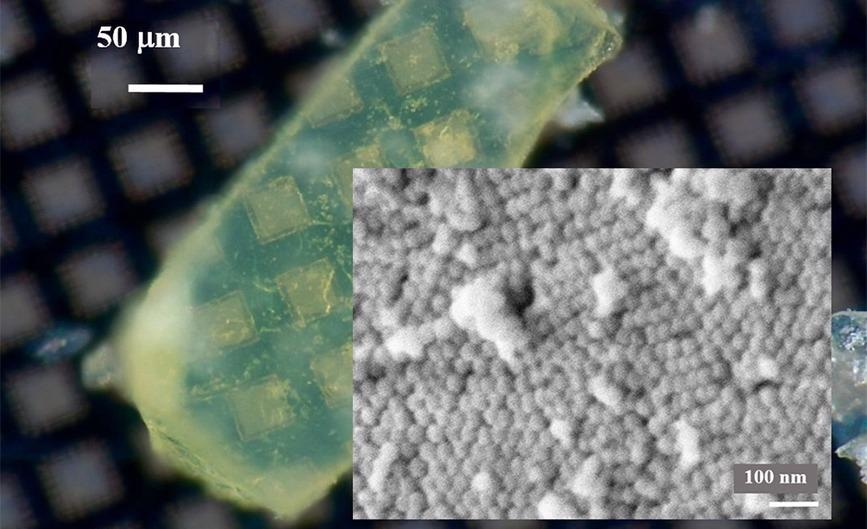Research group from the KTH Royal Institute of Technology (KTH) and Max Planck Institute of Colloids and Interfaces identified the key to the regulated fabrication of cerium oxide mesocrystals.
 A magnified view reveals nanoscale mesocrystals (inset) starting to assemble and form an ordered supracrystal structure, seen in green. Image Credit: courtesy of Inna Soroka
A magnified view reveals nanoscale mesocrystals (inset) starting to assemble and form an ordered supracrystal structure, seen in green. Image Credit: courtesy of Inna Soroka
The study finding is an advancement in the tuning of nanomaterials that could serve an extensive range of uses—such as fuel catalysts, solar cells, and even medicine.
Mesocrystals are nanoparticles having the identical size, shape, and crystallographic orientation, and they could be utilized as building blocks to make artificial nanostructures with tailored optical, electronic, or magnetic properties.
In nature, such three-dimensional structures are discovered in sea urchins, coral, and calcite desert rose. Artificially-produced cerium oxide (CeO2) mesocrystals—or so-called nanoceria—are popular as catalysts, with antioxidant properties that can be beneficial in pharmaceutical development.
To be able to fabricate CeO2 mesocrystals in a controlled way, one needs to understand the formation mechanism of these materials.
Inna Soroka, Researcher, Applied Physical Chemistry, KTH Royal Institute of Technology
Soroka says the researchers utilized radiation chemistry to disclose for the first time the ceria mesocrystal formation mechanism.
Due to their complexity, mesocrystal formation does not follow the same path as ordinary crystals—a process known as Ostwald Ripening. Here, smaller particles in the solution dissolve and deposit on bigger particles.
The scientists discovered that a gel-like, amorphous phase develops a matrix in which main particles, nearly 3 nm in size, align with each other, self-assembling into mesocrystals having a diameter measuring around 30 nm.
If the mesocrystal was a house, this amorphous phase plays the role of the cement that connects the aligned bricks in the walls.
Inna Soroka, Researcher, Applied Physical Chemistry, KTH Royal Institute of Technology
They also discovered that the mesocrystals could additionally self-organize and develop supracrystals, which are visible to the naked eye.
“Just as an architect may design not a single house but a whole neighborhood with the houses oriented in a certain way to serve the needs of their inhabitants,” stated Soroka.
Soroka stated this multi-level hierarchical architecture of supracrystals is an interesting idea for future materials design.
People are fascinated by the variety of structures and complex forms that are found in nature, such as sea urchins and corals. And scientists are interested in how the crystallation processes work. Our work is a contribution to this understanding.
Inna Soroka, Researcher, Applied Physical Chemistry, KTH Royal Institute of Technology
Journal Reference:
Li, Z., et al. (2021) Radiation Chemistry Provides Nanoscopic Insights into the Role of Intermediate Phases in CeO2 Mesocrystal Formation. Angewandte Chemie. doi.org/10.1002/anie.202112204.